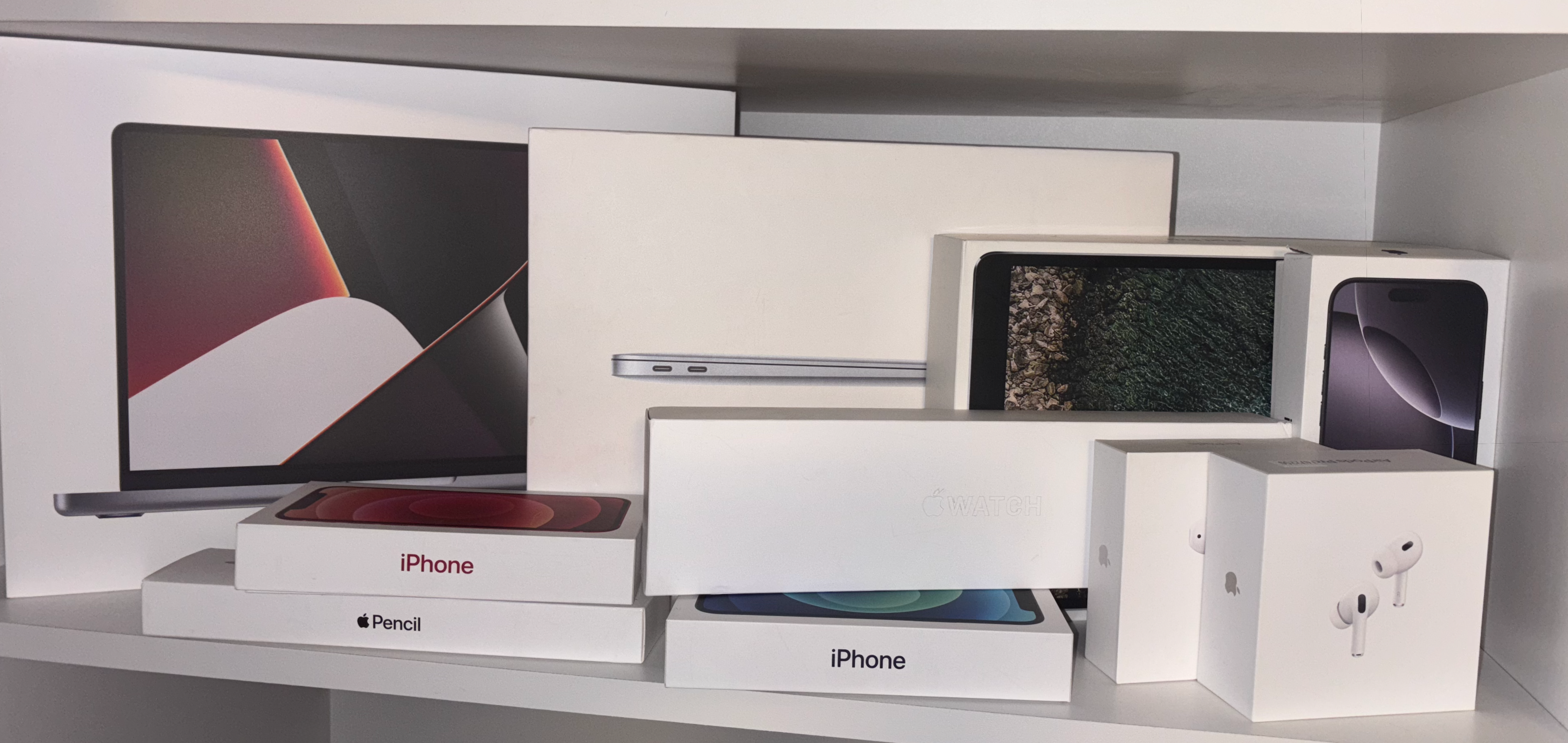My Journey
Personal Tech
There's something about half-formed things that keeps me in them longer than I expect. I've always thrived in that in-between space of taking something functional and making it intentional.
I'll always be grateful for my first Mac. You could say it kind of snowballed from there…

All these devices became extensions of my creativity. Whether I was designing sneakers on Procreate, designing my dreams as games in Roblox Studio or building my Shopify online store. I was opened up to a whole new world where I could build things from scratch, shape how they worked, and actually bring ideas to life.
That's part of what drew me to code. It gave structure to something I've always been good at: iteratively, carefully, and with an attention to detail. And more than that, it gave it direction. Instead of just solving things for myself, I could build tools, projects, ideas that other people actually used.
Tech Made Personal
Early on, I was more interested in how things connected than in any one language or framework. One of my first projects, JARVIS, was a personal voice assistant inspired by the Iron Man movie that could handle custom prompts and respond dynamically (before LLMs took over). Seeing how much fun my friends and family had using it helped me realize I enjoy building systems that felt responsive and human.
I soon started focusing on user-centered thinking. This spurred a shift where along with worrying about writing efficient code, I started thinking about building efficient experiences.
Full-Stack Thinking
So when I got to USC and finally had the chance to explore my passions for CS and Business, naturally—as you can probably guess—I tried my hand at UI/UX design. With zero experience, I opened up Figma one day and discovered how incredibly intuitive it was to translate my ideas into designs. What started as a 24-hour challenge turned into a genuine passion, and before I knew it, I'd landed a spot in one of the university's most competitive clubs and the premier startup incubator, as a designer.
It was a way to challenge myself, pick up valuable skills quickly, and pushed me to think even more deeply about the user experience—an undervalued and underrated core skill as a developer.
I did not stop building though. My product design work became a natural extension of my role as a developer and my work at the startup incubator culminated in Optis: a desktop tool that records and analyzes how engineers work, using computer vision to extract nonverbal cues and LLMs to map thought patterns.
That project taught me how much good design relies on clear systems—and how much good systems rely on empathetic design. It was also the first time I worked across technical and nontechnical layers, and realizing how often they transpose.
Tech with Personality
It took me a while to realize that not every project needs to change the world for it to matter. CulinAIre, for instance, was born from indecision after being thrown into a vibrant Los Angeles culinary scene. I wanted a better way to pick what to eat with zero knowledge on a cuisine. So I built a system that scans menus using OCR, maps flavor profiles, and recommends dishes based on personal taste data.
At Veyra though, where I'm currently working, I definitely am building important technology. My primary role is designing and deploying voice agents that assist patients disputing medical bills. It's backend-heavy—structured data parsing of terrabytes of insurance data, laws, and the polices that make up America's healthcare system—but it still demands clarity and user awareness. The systems need to be robust and smart, but also empathetic and explainable to an everyday patient.
TL;DR
I'm drawn to software that simplifies complexity, not by hiding it, but by organizing it well. I like tools that respect people's time and attention. Whether I'm writing backend logic or prototyping UI flows, I try to build things that are reliable, understandable, and quietly thoughtful.
Not everything I've worked on is polished, but everything has taught me something—and that's really the throughline here. I've learned how to think more clearly, build more intentionally, and always ask whether a system is serving the person using it.